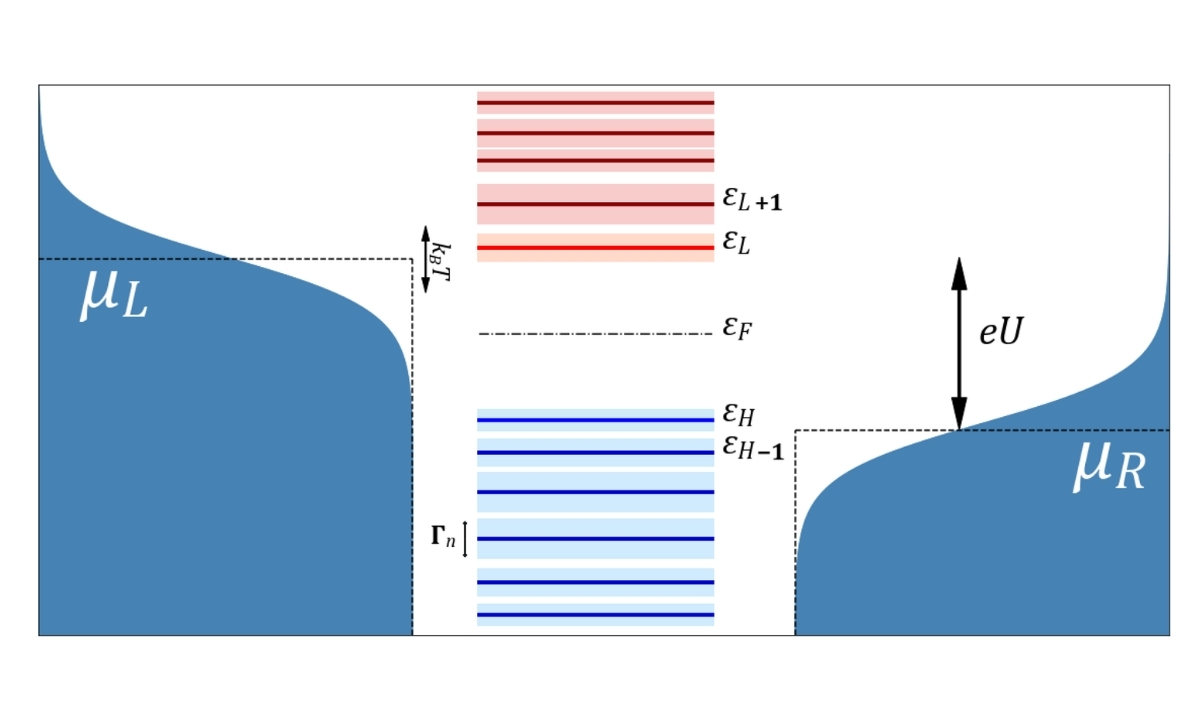
What is the Landauer-Büttiker Formalism? It's a powerful theoretical framework used to understand electronic transport in mesoscopic systems. Developed by Rolf Landauer and later expanded by Markus Büttiker, this formalism provides a way to calculate conductance by considering quantum mechanical effects. Unlike classical approaches, it takes into account the wave nature of electrons, making it essential for studying nanoscale devices. Key concepts include transmission probabilities, scattering matrices, and quantum coherence. This approach has revolutionized how scientists and engineers design and analyze modern electronic components, from quantum dots to nanowires. Understanding this formalism is crucial for anyone working in nanotechnology or condensed matter physics. Ready to dive into 31 fascinating facts about this groundbreaking theory? Let's get started!
What is Landauer-Büttiker Formalism?
Landauer-Büttiker formalism is a theoretical framework used to describe electronic transport in mesoscopic systems. It provides a way to calculate the conductance of a conductor by considering the transmission probabilities of electrons through the system.
-
Developed by Rolf Landauer and Markus Büttiker, this formalism revolutionized the understanding of quantum transport in small-scale systems.
-
Mesoscopic systems are those that are larger than atoms but small enough that quantum mechanical effects are significant.
-
Conductance quantization is a key prediction of this formalism, where conductance occurs in discrete steps rather than continuously.
-
Transmission probabilities are central to the formalism, determining how likely electrons are to pass through a conductor.
Key Concepts in Landauer-Büttiker Formalism
Understanding the core concepts helps in grasping the significance of this formalism in quantum transport.
-
Quantum coherence is essential, as electrons maintain their phase relationship over the length of the conductor.
-
Phase coherence length is the distance over which an electron maintains its phase coherence, crucial for mesoscopic transport.
-
Scattering theory is used to describe how electrons interact with impurities and other imperfections in the conductor.
-
Ballistic transport occurs when electrons travel through a conductor without scattering, a regime where Landauer-Büttiker formalism is particularly effective.
Applications of Landauer-Büttiker Formalism
This formalism has numerous applications in modern physics and engineering.
-
Nanoelectronics benefits greatly, as the formalism helps design and understand devices at the nanoscale.
-
Quantum computing uses principles from this formalism to manage electron transport in quantum bits or qubits.
-
Spintronics leverages the formalism to study and manipulate electron spin in addition to charge.
-
Thermoelectric materials are analyzed using this formalism to improve their efficiency in converting heat to electricity.
Mathematical Framework
The mathematical backbone of the Landauer-Büttiker formalism is both elegant and complex.
-
Landauer formula relates the conductance of a conductor to its transmission probabilities.
-
Büttiker probes are hypothetical reservoirs used to model inelastic scattering and phase-breaking processes.
-
Green's functions are mathematical tools used to describe the propagation of electrons in the system.
-
Scattering matrix (S-matrix) encapsulates all the information about how electrons scatter within the conductor.
Experimental Evidence
Numerous experiments have validated the predictions of the Landauer-Büttiker formalism.
-
Quantum point contacts have shown conductance quantization, a direct prediction of the formalism.
-
Aharonov-Bohm effect experiments demonstrate the importance of phase coherence in mesoscopic systems.
-
Coulomb blockade phenomena in quantum dots align with the predictions of the formalism.
-
Shot noise measurements provide insights into the discrete nature of electron transport, supporting the formalism.
Challenges and Limitations
Despite its success, the Landauer-Büttiker formalism has its limitations.
-
Inelastic scattering is not fully accounted for, as the formalism primarily deals with elastic scattering.
-
High-temperature effects can disrupt quantum coherence, making the formalism less applicable.
-
Complex geometries of conductors can complicate the application of the formalism.
-
Many-body interactions are challenging to incorporate within this framework.
Future Directions
Research continues to expand and refine the Landauer-Büttiker formalism.
-
Topological insulators are a new class of materials where the formalism is being applied to understand edge states.
-
Graphene and other two-dimensional materials offer new platforms for testing and extending the formalism.
-
Hybrid systems combining superconductors and normal conductors are being studied using this formalism.
-
Non-equilibrium conditions are an area of active research, extending the formalism to more complex scenarios.
Interesting Tidbits
Some lesser-known but fascinating aspects of the Landauer-Büttiker formalism.
-
Noise properties of mesoscopic systems can be analyzed using this formalism, providing deeper insights into electron transport.
-
Quantum Hall effect studies have benefited from the formalism, particularly in understanding edge states.
-
Interference effects in mesoscopic rings and other structures are elegantly described by the formalism.
The Final Word on Landauer-Büttiker Formalism
Landauer-Büttiker formalism is a cornerstone in understanding quantum transport. It bridges the gap between microscopic quantum mechanics and macroscopic electrical measurements. This theory helps explain how electrons move through conductors, which is crucial for developing nanoscale devices. By considering factors like conductance, resistance, and the role of contacts, it provides a comprehensive framework for analyzing electronic transport.
This formalism has wide-ranging applications, from designing efficient transistors to advancing quantum computing. Its principles are not just theoretical but have practical implications in modern technology. Understanding this formalism can lead to innovations in electronics, making devices faster and more efficient.
So, whether you're a student, researcher, or tech enthusiast, grasping the basics of Landauer-Büttiker formalism can offer valuable insights into the future of electronic devices. Keep exploring, and who knows what breakthroughs you might contribute to next?
Was this page helpful?
Our commitment to delivering trustworthy and engaging content is at the heart of what we do. Each fact on our site is contributed by real users like you, bringing a wealth of diverse insights and information. To ensure the highest standards of accuracy and reliability, our dedicated editors meticulously review each submission. This process guarantees that the facts we share are not only fascinating but also credible. Trust in our commitment to quality and authenticity as you explore and learn with us.
